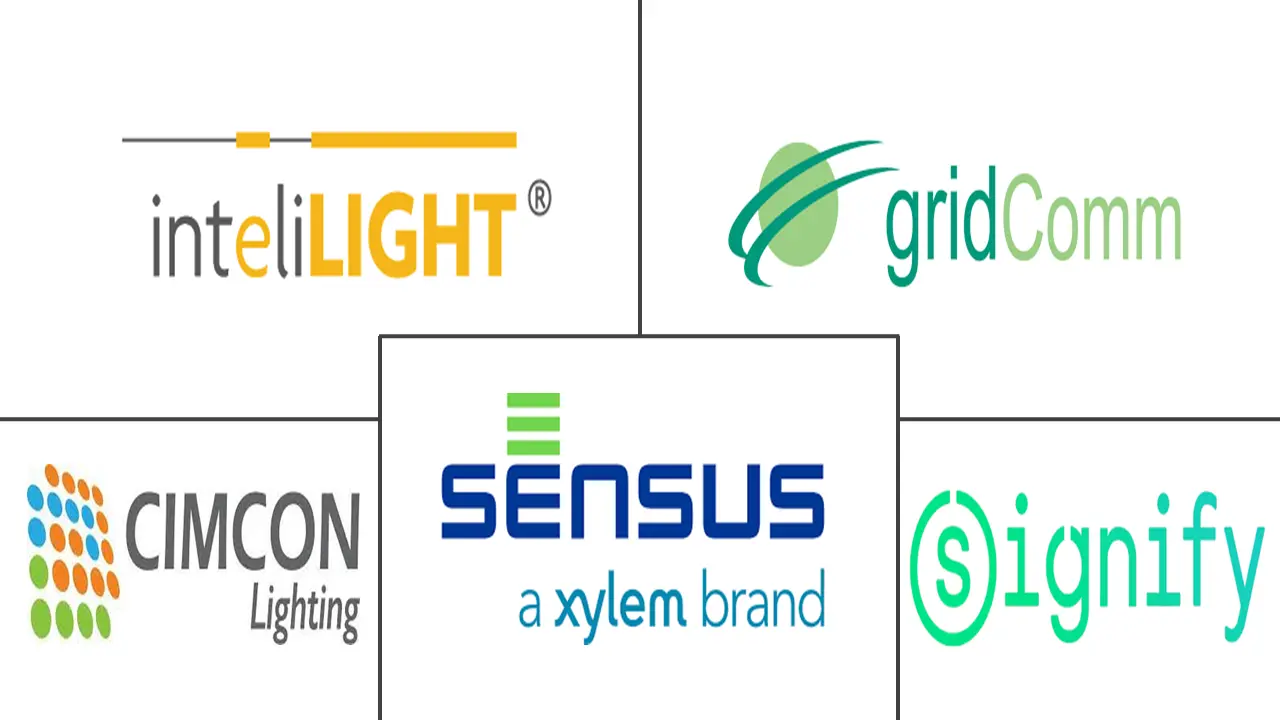Connected Street Lighting Market Size and Share
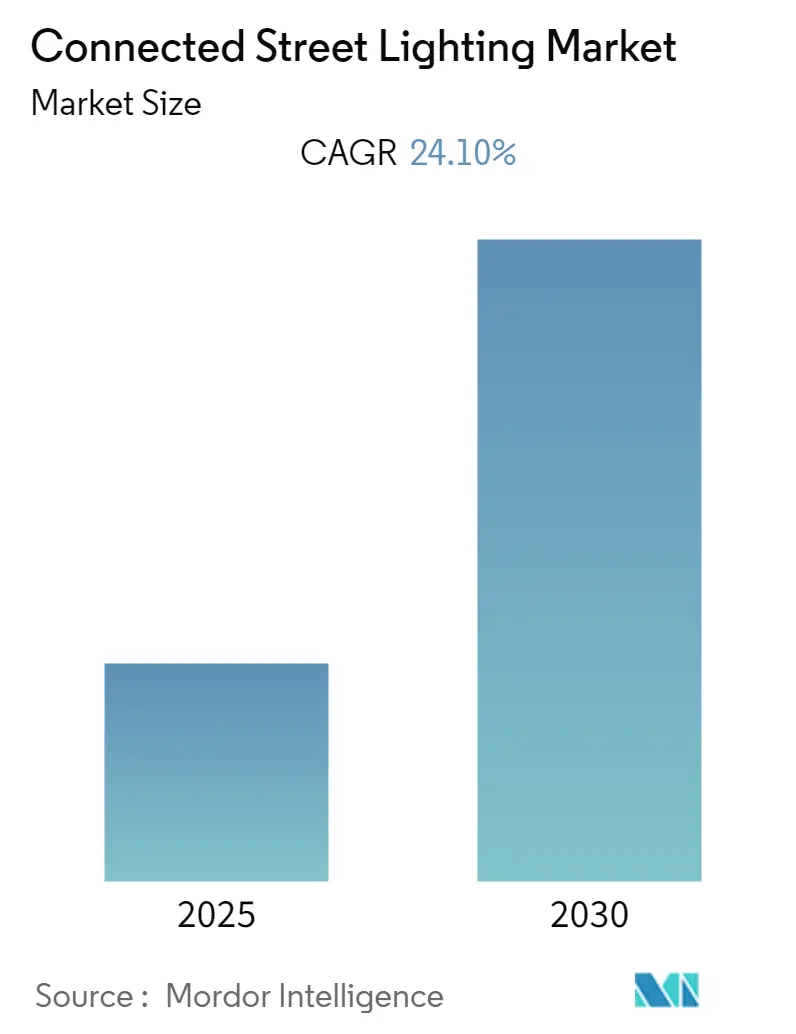
Connected Street Lighting Market Analysis by Mordor Intelligence
The Connected Street Lighting Market is expected to register a CAGR of 24.1% during the forecast period.
- Connected street lighting also enables governments to use their street lights for Wi-Fi access. These access points can be used by city personnel to lower their cellular data usage, reducing the city's expenses. Wi-Fi access points can also provide internet access to local businesses and residents, providing the city with new leasing or advertising revenues. In addition, cities can use these Wi-Fi access points to help bridge the digital divide by delivering poorer city residents free or low-cost internet access. Smart parking meters or pay stations attached or connected to light poles can also eliminate the costs associated with trenching for standalone meters and pay stations.
- Additionally, there have been considerable advancements in connecting technologies in recent times. Traditionally, cities trying to centralize connectivity for smart street lighting used proprietary gateways connecting to smaller segments of streetlights that are priorly connected via low-bandwidth communications, such as a power line carrier (PLC) or local RF mesh network adhering to several IEEE standards.
- While various proprietary RF mesh or star networks currently account for the majority of smart street lighting installations, the adoption of low-power wide-area (LPWA) technologies such as narrowband IoT (NB-IoT) and long-range (LoRa) is growing fast, particularly in the European and Asian markets.
- Poor infrastructure in developing economies is expected to limit demand for connected street lights in the next few years. This can be ascribed to underdeveloped network infrastructure and low internet penetration, which leads to less bandwidth availability.
- The connected street lighting market has also been significantly affected by the outbreak of COVID-19 as other industries and companies have been forced to restructure their strategies to deal with the ongoing pandemic. Companies such as Telensa and Itron were among the worst hit due to this pandemic.
Global Connected Street Lighting Market Trends and Insights
Increasing Number of Smart City Initiative and Down Trend of LED Prices to Drive the Market
- One of the main forces behind the adoption of smart and intelligent solutions is an increase in the number of people residing in urban areas, including the overall growth of the urban population (81% of the total population lives in cities). Modern cities have expanded primarily due to the requirement for efficient resource management in smart cities. Governments from many nations are cooperating and partnering with one another to move away from the conventional silo-based service delivery model and toward a collaborative and integrated model. More smart cities globally will result in a more robust demand for linked street lights because the market for connected street lights is strongly correlated with the number of smart city initiatives.
- Additionally, smart cities use various digital technologies to enhance device performance and communication; this helps to save expenses and use resources more effectively. A digital network and embedded sensors in smart street lighting enable the monitoring of municipal traffic and air quality.
- Moreover, government incentives for purchasing semiconductor machinery, such as metal-organic chemical vapor deposition (MOCVD) equipment used to make LEDs, are lowering manufacturing costs, pushing firms to boost their LED production capacity.
- Several industry players are working together with local governments to build smart cities. The connected (smart) street light sector garners participants' attention due to the growing awareness of energy-saving and efficient lighting techniques. Furthermore, it is anticipated that the market will rise due to the development of sensors and wireless systems in smart lighting.
- Additionally, the networked lights can monitor parking availability and identify traffic bottlenecks. It is anticipated that camera-connected smart street lighting will increase road safety by reducing the likelihood of accidents and criminal activity. As a result, the market expansion is expected during the forecast period as smart cities emerge.
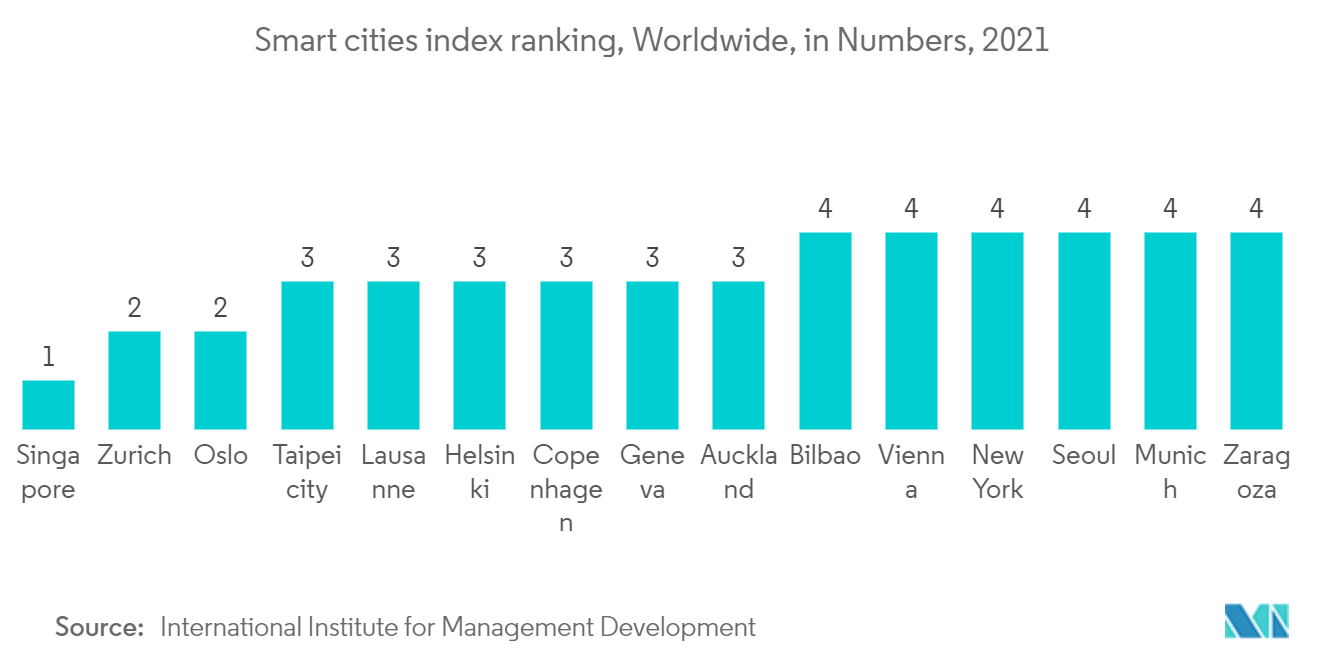
Asia-Pacific is Expected to Hold Major Share
- Asia-Pacific is currently experiencing a significant shift in lighting systems. Several companies operating in the region are increasingly adopting LED lighting, as compared to their counterparts, like incandescent and LFL, for use in their manufacturing plants, due to the improved energy efficiency of LED lighting systems.
- Further, the primary driver towards the adoption of connected street lighting is the government regulations towards preventing CO2 emissions incurred by Asian countries. For instance, South Korea's second National Energy Master Plan established the goal of 13% below the business-as-usual emission level by 2035. It also implemented various regulations, including the plan for an emissions-trading system (financial support and tax credits).
- In many cities around the globe, FTTH/ Hub C plans are ongoing, often using lighting infrastructure to minimize the cost of roll-out. This could also represent a significant boost to the development of smart applications.
- Moreover, In Japan, significant factors providing growth opportunities for smart lighting include the speedy development of sensor and wireless technology and increasing demand for smart lighting solutions for developing smart cities and street lighting. The development projects undertaken by the country's local authorities are further providing the necessary impetus for the market.
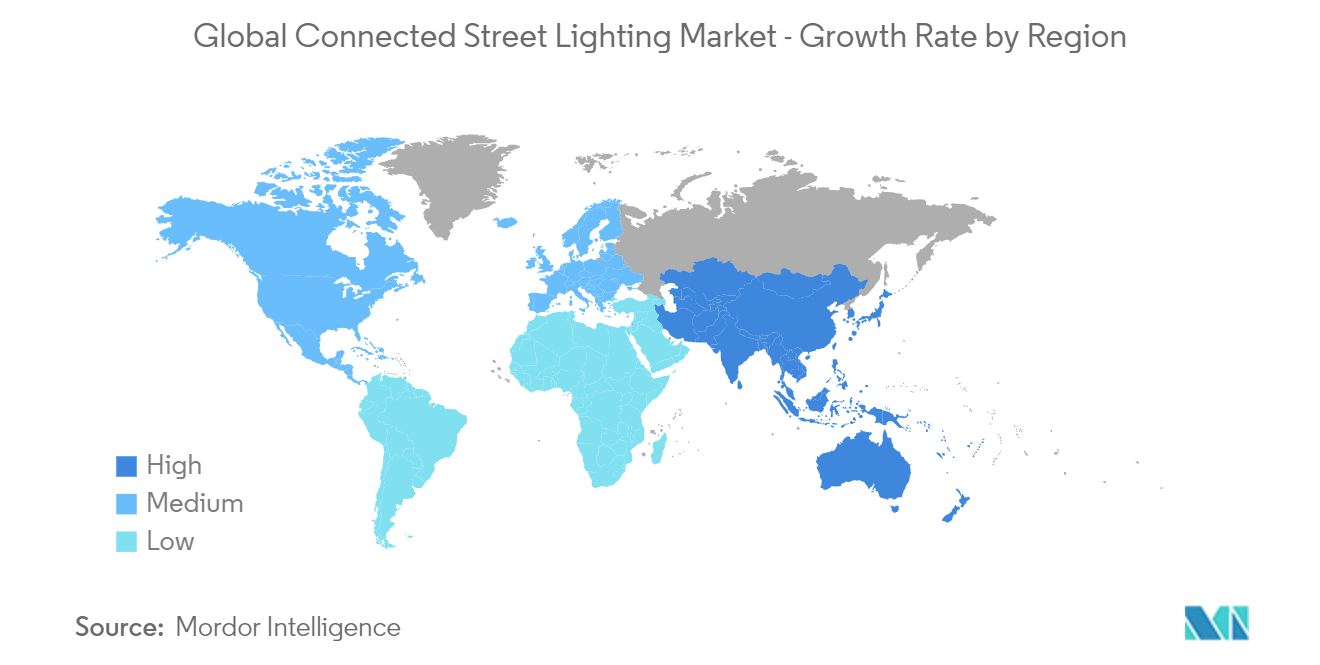
Competitive Landscape
The connected street lighting market is competitive because numerous participants operate nationally and internationally. The big firms mostly use product innovation, mergers, and acquisitions to expand their footprint and stay ahead of the competition.
- June 2022 - Lucy Group Ltd has announced the acquisition of InteliLIGHT (Flashnet SA), and both companies will work closely to develop the combined innovative lighting businesses, such as investing in smart lighting and smart city technologies into the future as part of the strategy for enhancing their key business areas and delivering sustainable growth across the regions.
Connected Street Lighting Industry Leaders
-
InteliLIGHT (Flashnet SA)
-
Sensus, a Xylem Brand
-
GridComm
-
CIMCON Lighting
-
Signify Holding
- *Disclaimer: Major Players sorted in no particular order
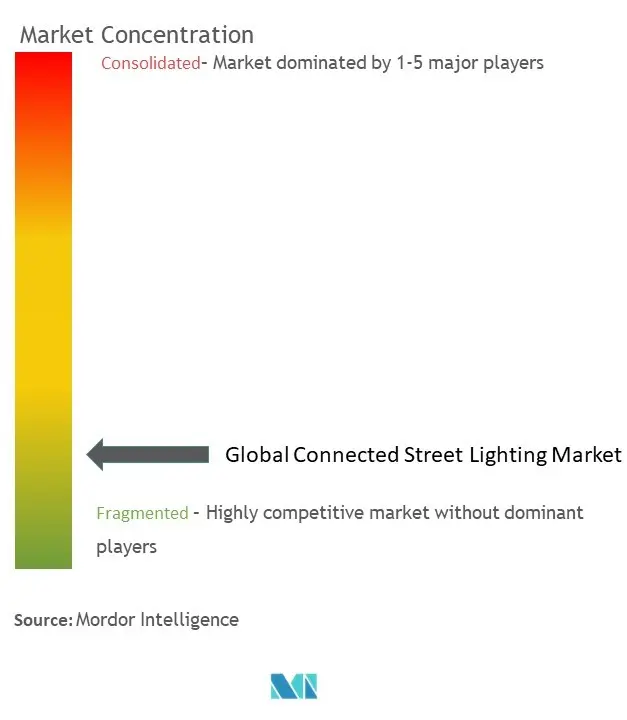
Recent Industry Developments
- December 2022 - Itron, Inc. announced that it's working together with Maryland's gas and electric utility, Baltimore Gas & Electric (BGE), to connect and manage 260,000 Itron smart streetlights across the utility's service territory, which will help reduce energy consumption and enhance the wellbeing and safety of the community. BGE will use its existing Itron multi-purpose IIoT network to connect the smart streetlights, which are expected to be deployed through 2026.
- October 2022 - Telensa Holdings Ltd., a U.K.-based provider of wireless monitoring and management systems for smart cities using its innovative "hybrid" network architecture, has introduced its connected street light solutions. To provide customers with a highly adaptable solution supported by a single management system and user interface, the business added cellular connectivity to its UNB radio technology network.
Global Connected Street Lighting Market Report Scope
Connected streetlights enable the operators to centrally manage the lighting infrastructure through a central management system via wired/wireless network architecture. Sensor suite generally helps the connected streetlight to save energy by detecting several environmental parameters.
The Connected Street Lighting Market is Segmented by Geography. The market sizes and forecasts are provided in terms of value (USD million) for the above segments.
| North America |
| Europe |
| Asia-Pacific |
| Rest of the World |
| Geography | North America |
| Europe | |
| Asia-Pacific | |
| Rest of the World |
Key Questions Answered in the Report
What is the current Connected Street Lighting Market size?
The Connected Street Lighting Market is projected to register a CAGR of 24.1% during the forecast period (2025-2030)
Who are the key players in Connected Street Lighting Market?
InteliLIGHT (Flashnet SA), Sensus, a Xylem Brand, GridComm, CIMCON Lighting and Signify Holding are the major companies operating in the Connected Street Lighting Market.
Which is the fastest growing region in Connected Street Lighting Market?
Asia Pacific is estimated to grow at the highest CAGR over the forecast period (2025-2030).
Which region has the biggest share in Connected Street Lighting Market?
In 2025, the North America accounts for the largest market share in Connected Street Lighting Market.
What years does this Connected Street Lighting Market cover?
The report covers the Connected Street Lighting Market historical market size for years: 2019, 2020, 2021, 2022, 2023 and 2024. The report also forecasts the Connected Street Lighting Market size for years: 2025, 2026, 2027, 2028, 2029 and 2030.
Page last updated on:
Connected Street Lighting Market Report
Statistics for the 2025 Connected Street Lighting market share, size and revenue growth rate, created by Mordor Intelligence™ Industry Reports. Connected Street Lighting analysis includes a market forecast outlook for 2025 to 2030 and historical overview. Get a sample of this industry analysis as a free report PDF download.
